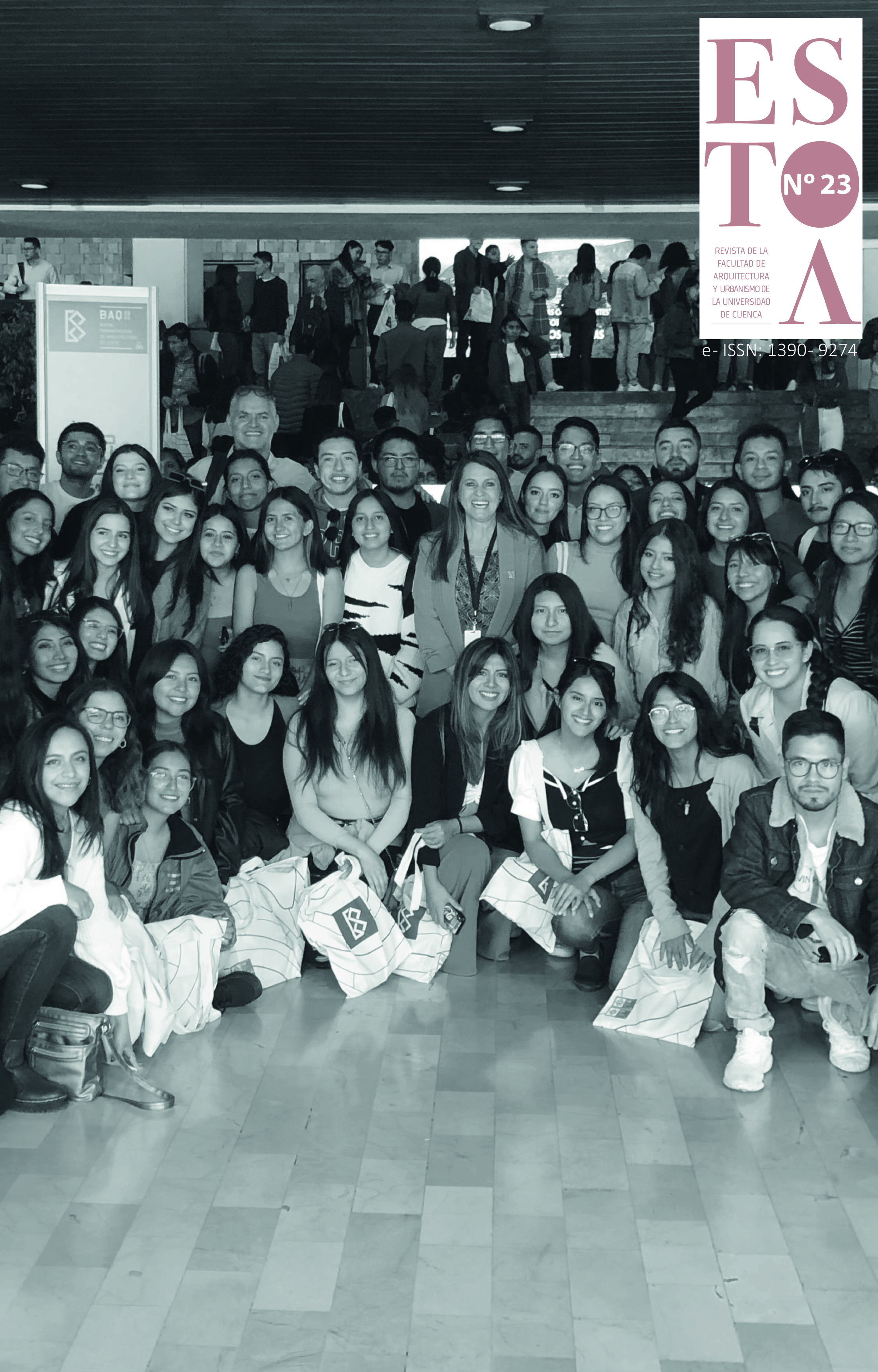The fabrication of the city between urban rule and urban project, case of Annaba city
DOI:
https://doi.org/10.18537/est.v012.n023.a11Keywords:
normative rule, urban project, emblematic projects, project approach, urban planningAbstract
The normative urban rule is a technical and hygienic rule which is essentially concerned with the rights to build on the land. Designed according to a purely quantitative vision, it constitutes a rigid regulation which imposes itself as a constraint devoid of meaning. Its dysfunctions and failures have led to its rejection and the emergence of a new trend: the urban project. This concept was nourished by the theoretical debates on historic centres in Italy around the 1960s. Following the example of Algerian cities, Annaba has witnessed the emergence of various emblematic projects in recent years. In order to know whether the approach followed is that of an urban project, a comparison of urban management between Annaba and three European cities has been made in this work. This study allows for the redefinition of the existing urban planning tools in order to put in place other innovative and more efficient ones.
Downloads
References
Berezowska, A. E. (2012). Projet urbain. Guide méthodologique. Comprendre la démarche du projet urbain (Vol. 2), Synergie Alger.
Carrière, J. P., & Demazière, C. (2002). Projets urbains et grands projets emblématiques: réflexions à partir d’expo 98 à Lisbonne. In J. P. Carrière (Dir.), Villes et projets urbains en Méditerranée (pp. 33-51). Presses universitaires François-Rabelais.
Deng, Y., & Poon S. W. (2013). Professional Practice in Programming Large Public Building in China: A Questionnaire Survey. Frontiers of Architectural Research, 2(2), 222-233.https://doi.org/10.1016/j.foar.2013.04.002
De Nictolis E., & Iaione C. (2021). The City as a Commons Reloaded: from the Urban Commons to Co-Cities Empirical Evidence on the Bologna Regulation. S. R. Foster & C. F. Swiney (Eds.), The Cambridge Handbook of Commons Research Innovation (pp. 124-137). Cambridge University Press. http://dx.doi.org/10.2139/ssrn.3865774
Derdour, H. (2013). Annaba 25 siècles de vie quotidienne et de lutte, (Vol. 1). Dar El Wissem El- Arabi.
Devillers, C. (1994). Le projet urbain, Éditions du pavillon de l’arsenal.
Hassanain, M. A., & Juaim, M. N. (2013). Modeling Knowledge for Architectural Programming. Journal of Architectural Engineering, 19(2), 101–111. https://doi:10.1061/(asce)ae.1943-5568.0000099
IDESCAT (2020). The Municipality in Figures. Barcelona (Barcelonès). Statistical Institute of Catalonia. https://www.idescat.cat/emex/?id=080193&lang=en
Ingalimna, P. (2010). Le projet urbain. Puf.
INSEE. (2019). Comparateur de territoires. https://www.insee.fr/fr/statistiques/zones/1405599
ISTAT (2019). Istituto Nazionale di Statistica. Annual Estimated Population. https://www.istat.it/
Ma, W. (2015). Urban Development Programming. China Architecture & Building Press.
Mangin, D., & Panerai, P. (1999). Projet urbain. Parenthèses.
Martin, V., & Novarina, G. (2003). Plan et Projet, l’urbanisme en France et en Italie. Géocarrefour, 78(4), 224.
Masboungi, A. (2002). Le projet urbain à la française. F. Gravelaine & A. Masboungi (Dir.), Projets urbains en France (pp. 23-31). Le Moniteur.
Ministère Algérien de l’Aménagement du Territoire et de l’Environnement (2010). Schéma National d’Aménagement du Territoire. Republique Algerienne Democratique et Populaire.
Molaei Qelichi, M., Murgante, B., Yousefi F., & Moslem Z. (2017). Urbanization patterns in Iran visualized through spatial auto-correlation analysis. Spatial Information Research, 25, 627–633. https://doi.org/10.1007/s41324-017-0128-0
Neiler E. (2015). Architectural Programming, a Necessary Stage in All Projects. Tinkelman Architecture.
Odongo, J. O, & Donghui, M. (2021). Perspectives in Urban Planning Research: Methods and Tools. Current Urban Studies, 9(4), 759-778. https://doi.org/10.4236/cus.2021.94045
Pareja-Eastaway M., & Piqué J. M. (2022). Changing pathways: urban dynamics and governance at 22@Barcelona. In J. Engel (Ed.), Clusters of Innovation in the Age of Disruption (pp.181-204). Edward Elgar Publishing. https://doi.org/10.4337/9781800885165.00017
Perrin, C., Nougarèdes, B., Sini, L., Branduini, P., & Salvati, L. (2018). Governance changes in peri -urban farmland protection following decentralisation: A comparison between Montpellier (France) and Rome (Italy). Land Use Policy, 70, 535–546. https://doi:10.1016/j.landusepol.2017.09
Picard, A. (2014). Impasses et enjeux de la ville. Études. Revue de culture contemporaine, (7), 29- 39.
Pinson, D. (2000). Projet de ville et projet de vies, in. A. Hayot, A. Sauvage. Le projet urbain Enjeux, expérimentations et professions, Editions de la Villette.
Pinson G. (2006). Le projet urbain en question (Draft), 1-36. https://www.academia.edu/12100840/Le_projet_urbain_en_questions
Rohani, S., & Ma W. (2018). Theories and Methods of Urban Development Programming: “Identifying Urban Development Programming Methodologies”. Current Urban Studies, 6(4), 532-558. https://doi: 10.4236/cus.2018.64029
Sokoloff, B. (1999). La planification des grandes interventions. In Barcelone ou comment refaire une ville? (pp.71-100). Presses de l’université de Montréal.
Spiga, S. (2004). L’urbain non planifié en Algérie, de la ville par l’État à la ville par l’habitant [Thèse de doctorat. Université Mentouri Constantine].
Tomas, F. (1995). Projets urbains et projet de ville. La nouvelle culture a vingt ans. Annales de la recherche urbaine, (68-69), 135-143.
Toussaint, J-Y (2003). Projets et usages urbains. Fabriquer et utiliser les dispositifs techniques et spatiaux de l’urbain, habilitation à diriger des recherches, Institut National des Sciences Appliquées de Lyon (INSA).
Van der Voordt, D. J. M., Van Wegen, H. B. R. (2005). Architecture in Use: An Introduction to the Programming, Design and Evaluation of Buildings. Architectural Press.
Published
How to Cite
Issue
Section
License
Copyright (c) 2022 Estoa. Revista de la Facultad de Arquitectura y Urbanismo

This work is licensed under a Creative Commons Attribution-NonCommercial-ShareAlike 4.0 International License.
The Journal declines any responsibility for possible conflicts derived from the authorship of the works that are published in it.
The University of Cuenca in Ecuador conserves the patrimonial rights (copyright) of the published works and will favor the reuse of the same ones, these can be: copy, use, diffuse, transmit and expose publicly.
Unless otherwise indicated, all contents of the electronic edition are distributed under a Creative Commons Attribution-NonCommercial-ShareAlike 4.0 International License.




